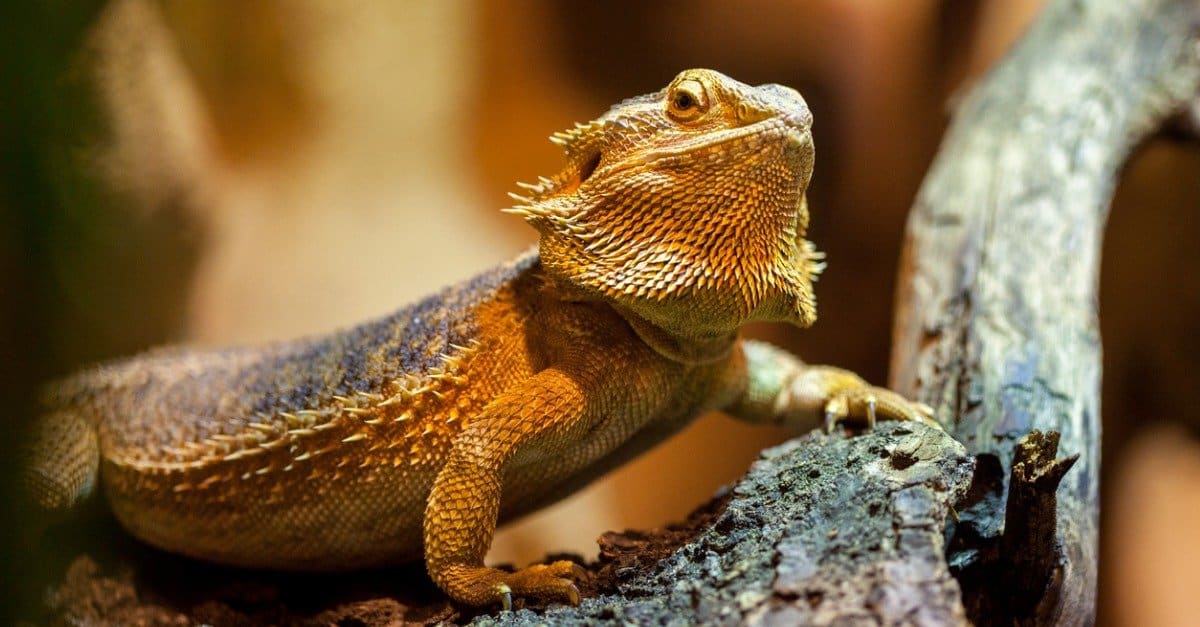Can bearded dragons eat rolly pollies? Let’s discuss
Yes, bearded dragons are filter feeders. Thus, they will eat almost any item that will fit in their mouths. Of course, this also includes the adorable little rolly pollies you can spot in your garden. So in this article we shall have detailed discussion on, can bearded dragons eat rolly pollies?

People often call a pillbug a “pill millipede,” or a rolly polly. They are spread all through the planet. And, they frequently inhabit gardens or wild areas. If it is so, it is most likely going to be black, grey. Or, it can also be brown in colour. Although some people view them as pests, they are pretty harmless. In fact, they are very entertaining to observe. Their habit to ball itself up when handled or attacked is how they got their moniker.
Can bearded dragons eat rolly pollies
Rolly pollies can be a key to a healthy, daily meal for your pet. But, the fact that some bearded dragon specialists do not advise feeding them to bearded dragons, is true. Be aware of the potential risks if you opt to feed rolly pollies to your bearded dragon. And, take cautious steps to mitigate those risks.
Small, segmented animals are called rolly pollies. Also, people know them as pillbugs or woodlice. And, they are often spotted in yards and gardens. They have a healthy quantity of protein, fat, and calcium. Of course, they are not harmful. They are also very nutritious.
However, giving rolly pollies to bearded dragons has a few possible dangers. In the beginning, rolly pollies may contain parasites and bacteria that could hurt your bearded dragon. Secondly, bearded dragons are not able to fully digest chitin because it is abundant in rolly pollies. A bearded dragon’s gut may have issues if it feeds on too many rolly pollies.
Read Also: Can I smoke around my bearded dragon
It’s key to wash Rollie Pollies well before feeding them to a bearded dragon. In fact, you should do this in order to lower the chances of these issues. It is best to speak with a vet or reptile expert if you have any doubts about anything. For instance, whether or not your bearded dragon may safely eat rolly pollies.
Will bearded dragons eat rolly pollies
Bearded dragons are insectivores. And, this means that insects make up a significant part of their food. They eat a wide range of insects in the wild, like roly-polies.
Roly-polies are tiny, dark-colored insects that one can frequently see in gardens and forests. People also know them as pillbugs or woodlice. They are a popular diet for bearded dragons. Since they are a treasure trove of nutrients and protein.
Also, Roly-polies can be dangerous when fed to bearded dragons, though. Roly-polies could infect your bearded dragon with dangerous parasites and pathogens. Additionally, they may be hard to digest. And, this may result in digestive issues.
You need to make sure that eating roly-polies to your bearded dragon is safe for your pet. So, do some research and consult a reptile vet.
Can bearded dragons eat pill bugs
Bearded dragons often eat rolly pollies. Also, other names for it are pillbugs or woodlice, which are a kind of crustacean. Although technically not insects, these animals are still a fantastic protein source for your bearded dragon. They consume many insects and wild rodents in the wild in addition to roly-polys.
Help ensure that the rolly pollies you feed your bearded dragon are safe to eat if you have caught them yourself. In lawns and other outdoor areas, you can find roly-poly creatures. If you take them from these locations, make sure to fully wash them off. Of course, keep these in mind before offering them to your bearded pet. This is due to the fact that they came into exposure to pesticides. Or, even in contact with other dangerous chemicals.
Before feeding the rolly pollies to your bearded dragon, it’s a great idea to roast them. Any germs or parasites that could be on their bodies will wane off in this step. Now, simply cook them for a few minutes in a boiling pot of water. After boiling them, you can cut them into tiny chunks to give to your pet.
Folks feed their beardies, rolly pollies, pillbugs, sowbugs, woodlice, etc. Of course, they are famous among reptile breeders for a good reason. For example, they give these insect-eating lizards good nutrition and a fun battle. However, the question is how frequently can bearded dragons consume rolly-pollies.
The answer to this question is dependent on a number of variables. For example, the age, shape, the activity level of your bearded dragon. Feeding them these twice a week is safe. If you decide to feed them more frequently than this, be sure to include different bug species (such as crickets and mealworms) to provide your pet a balanced diet.
Can bearded dragons eat stick bugs
Because they are not extremely nutrient-dense, they are not an excellent food for bearded dragons to eat. One must not feed them to the dragons. But, if they happen to eat one, they should be fine. However, since it is unknown what diseases any insects obtained in the wild may contain, they should refrain from eating them.
Instead, one can feed stick insects that keepers produce in captivity. Or the ones that people can acquire from a reputable pet food dealer.
Stink bugs are semi-toxic to bearded dragons. And, they can contain pesticides, other pollutants, and parasites. So, this could make your dragon sick. There are ways to prevent bugs from getting into your home. This is a precaution in case your dragon can find them. But, it could be hard to stop your dragon from spotting a bug and eating it before you are able to halt them.
Stink bugs and other wild bugs may carry parasites. Your dragon would then scoop up any parasites that the stink bug was carrying. Keeping bearded dragons in a limited setting is crucial for their health. Because, we all know them to be extremely prone to parasites.
If you can, avoid places where there are more stink bugs. Since it may be hard to keep your dragon from eating one when you’re outside with them. If stink bugs are a key issue where you live, it might be best to devote as much time as you can indoors with your dragon.
To save a few pennies, some individuals will go out of their own ways to feed their dragons wild insects and stink bugs. But doing so can end up costing them more expense.
What should a bearded dragon’s diet be?
- 25% of a young bearded dragon’s diet should consist of vegetables. However, it should be around 50% of an adult’s diet. Choices include shredded carrots, zucchini, mustard greens, collard greens, and kale. To prevent veggies from rotting inside their habitat, ensure that you remove any that they did not consume yet.
- You can give bearded dragon grain food, wet with water, every day. Commercial food gives a beardie’s diet more choice. For young lizards, several labels come in high-protein varieties. On the other hand, for adults, they come in lower-protein types.
- Doctors prescribe calcium supplements about once a week for children. And, twice a month for adults. Or, offer them as advised by your vet, sprinkle food with a multivitamin.
- At least once each day, pet parents should replenish and drain the water in their bearded dragon’s bowl. Since, having clear water is really necessary for them.
Compared to adults, young bearded dragons need to feed more frequently. As they grow, they require all of that excess fuel. An adult bearded dragon just eats food once per day. However, this is in comparison to a younger bearded dragon’s 2–5 main meals. Knowing exactly what a bearded dragon requires medically in their food is important. They need good food in order to stay happy, content, and fit . Thus, taking care of their dietary needs is a part of being their pet parent. Of course, it matters what you feed your bearded dragon. And, how frequently you feed them, what supplies you use for feeding reptiles. Or, how you keep their food.
Can bearded dragons eat celery
Bearded dragons can safely eat celery leaves. Alongside chopped celery, you can also serve chopped celery leaves together at the same time. Calcium, fibre, and vitamin E are all found in celery leaves. Moreover, they each support strong bones, good digestion, and healthy cells.
Can bearded dragons eat spinach
Despite all these wonderful virtues, spinach has one deadly defect that bearded dragons cannot handle. That is, it is highly oxalate-rich. You may already know that oxalates can be fatal to bearded dragons because they tie to calcium in the animal’s body. As a result, they prevent it from being taken into the blood.
Can bearded dragons eat bananas
You might be shocked to learn that dragons actually like to eat the banana peel. And, they like it in addition to the fruit since it gives the reward a little extra protein. So you can either feed your dragon the banana alone. Or, you can feed it along with other fruits and vegetables in a bright, healthy salad. You just need to slice it up along with the peel. You may easily slice up the peeled banana. And, put the pieces in the food bowl if you’d like not to feed the peel. Or, you can be worried because your fruit is not pure. So, you do not want to take the chance of giving your dragon any toxins that could be on the peel.
Beardies adore fruits. Also, the majority of them are secure and healthy. However, they should not outweigh the amount of veggies and bugs that your dragon takes.
Bananas are edible to bearded dragons. Bananas do, in fact, provide certain key nutrients that bearded dragons require. However, only around 20% of the plant-based part of your bearded dragon’s food should consist of fruit. Bananas should only be fed to pets as a reward rarely. And, always feed them the banana with the peel on.
FAQs
1. Do lizards eat Roly polies?
Ans: We can name some predators of roly poly or pill bugs. For example, frogs, toads, lizards, small mammals, and birds. In short, if it moves, a bigger species might want to kill it.
2. Can geckos eat pill bugs?
Ans: You can give your leopard gecko land isopods like pill bugs, sowbugs, and potato bugs as food. The calcium found in the exoskeleton of these crustaceans is really vital. In fact, you can need it for maintaining the bone density of your Leo.
3. Do geckos eat Rollie Pollies?
Ans: Offer a wide variety of insects; in addition to the more normal commercial pests (crickets, mealworms, wax worms, and superworms). Also, you can add widely viable silkworm larvae, tomato hornworms, cockroaches, moths. In fact, you can obtain them in the wild- grasshoppers, cicadas, and sow bugs.
4. What eats a pill bug?
Ans: Predators of pill bugs include anything larger. For example, frogs, toads, lizards, and small animals. Make sure to water in the daytime so the surface soil is dry at night. In fact, you can do this if you suspect these little critters are killing your saplings and young plants.
5. What bugs can bearded dragons not eat?
Ans: Never give a glowing insect to your bearded dragon. In fact, this includes bugs that can shine in the dark. For example, fireflies and lightning bugs. Bearded dragons are very harmful to the chemical that gives these insects their dazzling appearance. Because they are toxic to the beardies, one should also not feed them avocados.




